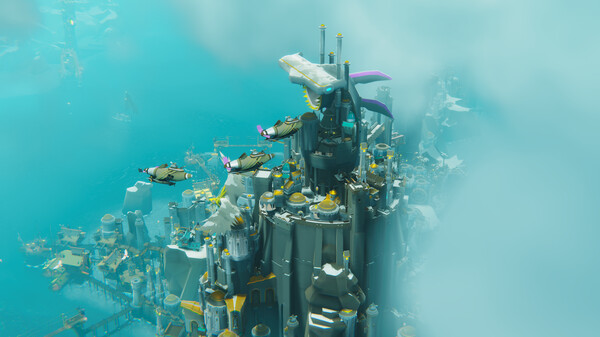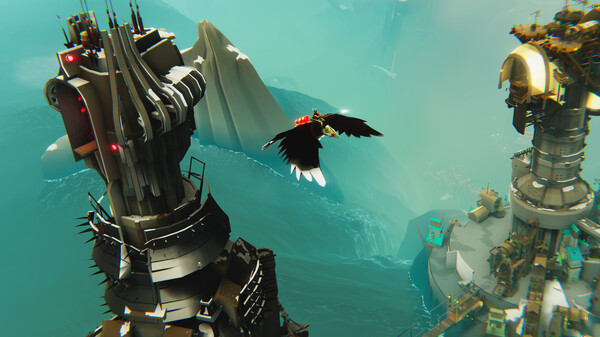Is the second Falconeer game worth a look?
Bulwark: Falconeer Chronicles is an open world builder with freedom and expression at its core, allowing players to build sprawling towns, spires, and fortresses that become hubs for trade, or rallying grounds for conquests. Carve your legacy into a world shattered by the decisions of those who came before you, tower by tower, wall by wall, sculpting from the daunting cliffs and perilous waters of an unforgiving landscape that refuses to be tamed. Tasked with rebuilding a civilization devastated by the aftermath of a war 40 years prior, you are in command of creating the last great settlement upon the Great Ursee – a vast, fantastical oceanic world filled with lost myths, breath-taking vistas and danger. From humble docks and wooden jetties, you will scavenge resources and grow your settlement as your population and creations grow ever grander, sculpting monumental stone towers and battlements that scrape the skies, where airships and giant warbirds rule.
The Falconeer was one of the launch games for the Xbox Series X, I reviewed it back then and was a big fan of the aerial combat and the superb visuals. Tomas Sala has done well in creating a new IP that has plenty of lore behind it, but what of the second game in this trilogy?
Bulwark: Falconeer Chronicles couldn’t be much more different from the first. It’s not a combat game, but a world-builder instead. You essentially create buildings that start a loop of trade between towns, fend off invaders and so on with a quite complicated setup that won’t be to everyone’s tastes. The setting definitely fits the series and it looks even better than the original, but the switch from genre may not be for everyone.
The entire premise is decent, but getting it all to work takes a lot of effort and concentration. At times, I didn’t even know if I was making any progress or if things were just ticking along. The tutorial does touch on the majority of how things work, but even that I found slightly overwhelming. To be fair to the game though, I’m not the greatest at these types of games so perhaps I’m not the best judge of character when it comes to the mechanics behind it, all I’m saying is that I found it overly complicated and unclear at times.
I can’t help feeling that the combat was added late on in the development, as it doesn’t seem to blend in as well as the rest of the game. It feels like an after-thought more than anything, I’m not sure if that’s the case or not, but it just doesn’t quite have the same depth as the rest of the game itself.
The controls start out being fairly simple, but do get more complex as things progress. The camera isn’t free-roam but is instead tied to each building as you build, which can lead to mistakes when placing other buildings and so on. You do get a blimp that can help you navigate more freely, but you do need to click where you want it go as opposed to having the full reins of it. The game does support keyboard and mouse for those who prefer that style over the console controls, but that too still doesn’t fix the issues listed.
The visuals are great though and it’s great to be back in the world of The Falconeer, even if it’s isn’t quite what most expected from a sequel. The framerate is smooth and the load times are short, while the soundtrack and voice-acting are decent overall.
The Verdict
I have to give a lot of credit to Tomas Sala for taking a big risk with this sequel. Most would do the same, but bigger but Sala decided to change the genre entirely and apparently will do so for the third and final game in the series, currently codenamed Project Ancient Waves. It shows he isn’t afraid to take a gamble and even if it doesn’t quite hit the mark, it’s an impressive game once you get the handle of things. Even though I wasn’t the biggest fan of this game, I still love the world he’s created and cannot wait for the next instalment.


